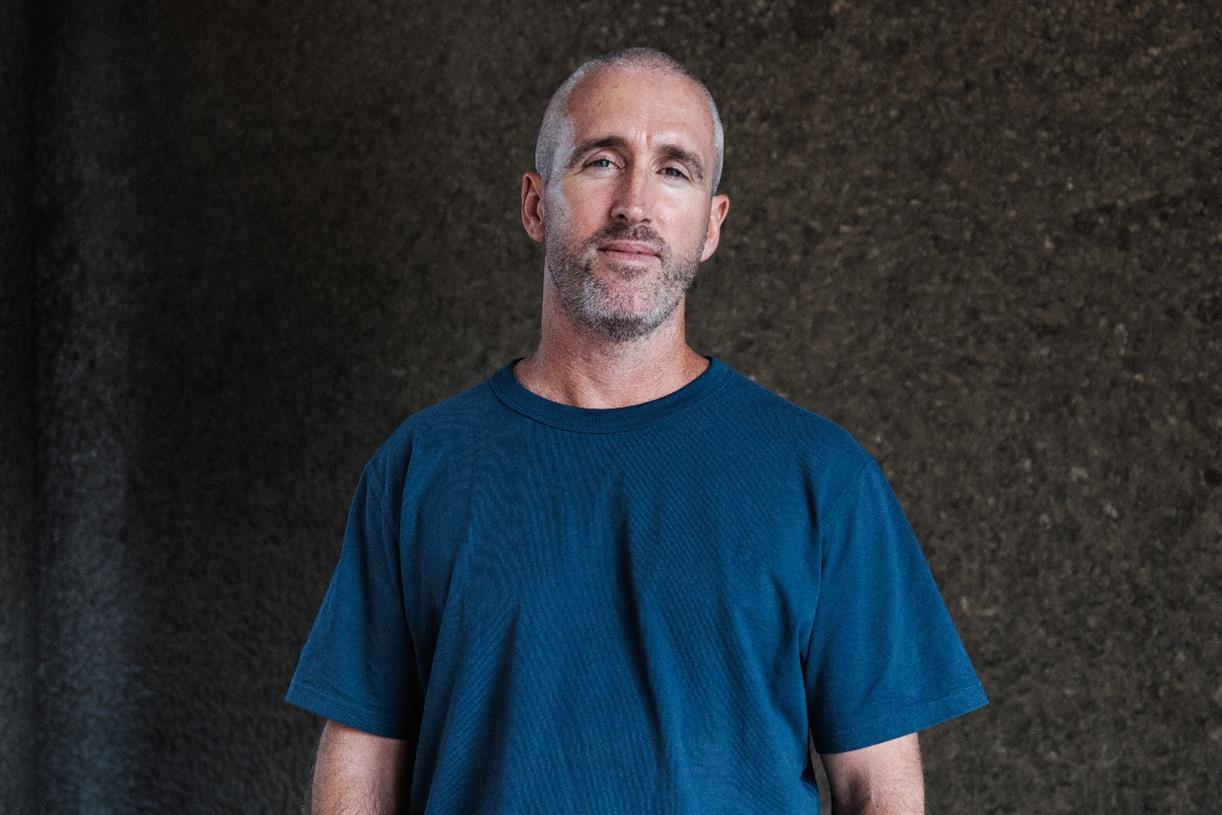Leaving My Sangha
Having experienced the disintegration of her sangha, a practitioner finds wisdom within the inevitability of change. The post Leaving My Sangha appeared first on Tricycle: The Buddhist Review.

 Art by Mariana Abasolo
Art by Mariana AbasoloI have had many strong loves in my life: children, animals, the color and smell of orange, swimming, fish, flowers, flamenco, Foucault, the art of Agnes Martin… The list is kaleidoscopic. But one of the most moving and indelible loves I have had is for my sangha.
By sangha, I mean the group of people and the organization where I received not only training in Buddhism but also a profound sense of personal succor. It is where I encountered “shelter from the storm.” It is where I was welcomed with all my disheveled confusion and gently invited to sit on a cushion and delve into the crevices of my mind. It is where I learned to sit straight, follow my breath, and let go of my thoughts. It is where I learned how to extend myself to others with compassion, one baby step at a time. It is the multiple friendships that allowed me to see others and myself without judgment. It is everyone who held my hand, made me laugh, shared their story, gave me a livelihood and a place to live, and, last but not least, showered me with the gift of the Buddhist teachings. It is where and with whom I sat in meditation and grew.
I can wax endlessly about the qualities of this third of the famous three jewels that are part of the foundational elements of Buddhist training. Sangha is right up there with the Buddha and the Dharma as a vital part of the path of unimpeded peace.
Before I was introduced to Buddhism, I was a very confused young woman, and I eventually realized that I needed to find a teacher. Not long after, I met my first dharma friend—someone equally confused and on the same quest. This friend “knew someone, who knew someone, who KNEW,” and he gave me a book. One phrase from that book—“mix your mind with space”—became my mantra. I followed its echo to the source, and there I found a vibrant world of intelligent people gathered around a dynamic and unfathomably brilliant mind in the form of a chubby, not very cherubic person who became my teacher, spiritual mentor, and door to wisdom.
It was an extremely diverse scene underpinned by a well-organized and financially accessible program of training staffed by enthusiastic and devoted students. I was deeply impressed. The basic practice was a simple meditation. The teachings presented were ancient, precise, and intellectual, representing a lineage of unbroken scholarship dating back to the Buddha. There were time requirements, testing, and progressive levels of instruction. Meanwhile, the dignity and intelligence of the central figure, the teacher, never failed to stop me in my tracks. The whole atmosphere was permeated with a playful creative wisdom that was gentle, incisive, clear, and inclusive.
I had found my spiritual home and felt deeply inspired. I was given a lifetime of practice and study materials and I imagined growing old within that sangha. I could think of nothing better to do than continue learning and practicing the progressive stages of meditation, and to help newer students in the same way I had been helped.
And then, one day, the teacher died, and everything changed.
I naturally expected the new leadership to support and maintain the brilliant and complete stream of teaching that had been established by the founder. Gradually, however, vital elements began to be edited or deleted. A new guru figure was installed and eventually an entirely new curriculum introduced. As things changed, some of us started referring to the new structure as “Buddhism Lite,” seeing it as more of a nod to the new age mindfulness movement than a serious study of Buddhism. Those of us who questioned the changes were not welcome and friends literally turned their backs. We were no longer eligible to teach, hold administrative positions, practice as we had been trained, or speak freely. The masterpiece that was the world of our teacher was carved up and damaged to the very foundation of its lineage. So I left.
In the end, however, the details of what happened are inconsequential to this story. The general experience of profound disappointment fits with anyone who has witnessed upheaval and change within their spiritual group.
Watching one’s beloved sangha collapse is a devastating experience, but one that I now see as not only inevitable but enlightening.
It was a terrible personal loss. I grieved. I blamed. I was angry—about losing my connectedness, my entitlement, my world, my future, my investment of time and energy. I found myself out in the cold and on my own, and most devastating of all, my practice faltered. I couldn’t sit on a cushion without mentally claiming my due in revenge or recognition. Early on in my dharma life, I used to say that the sangha organization gave me the strength to maintain my mindfulness. But with the sangha not in my life anymore, my mindfulness went right out the window. Poof.
I was a child who had lost my home. And I know I am not alone in that.
Watching one’s beloved sangha collapse is a devastating experience, but one that I now see as not only inevitable but enlightening. It’s easy to be comfortable and supported in a beautiful bubble. But there’s the rub…
A sangha, when viewed as an organization, is a composite like all things. As described by Khenchen Thrangu Rinpoche, Chandrakirti—a scholar of the Mahayana Madhyamaka school from around 600 CE—painstakingly analyzed the nature of a chariot to describe the inherent insubstantiality of our experience:
We apprehend chariots. We think that there are such things as chariots. Supported by a chariot, we can go from place to place. However, if we really look, where is the chariot? Are the wheels the chariot? Is the axle the chariot? Is the place where the driver stands the chariot? No. The wheels are the wheels. The axle is the axle. The place where someone stands is just that and nothing more. Each part of the chariot is, individually, just that part of the chariot and, individually, none of them are the chariot. Is there a chariot that is separate from those individual elements? Not at all. What about the shape of those elements? Is that the chariot? The shape is formed by the gathering together of many things; how could it be a chariot? Well, what is going on? We apprehend the gathering of many things as a chariot when, in fact, there is no chariot.” (From Khenchen Thrangu Rinpoche’s Essential Practice: Lectures on Kamalashila’s Stages of Meditation in the Middle Way School)
And that’s how sangha organizations are. They are chariots that deliver the dharma. They are never anything singular, solid, or long-term. So, when sanghas inevitably dissolve or change, or when they can’t provide a desirable practice environment anymore, what happens then? Are we left helpless?
In the biography of Milarepa, the famous Tibetan saint, it was only when he left his teacher Marpa’s sphere of influence after years of study and returned to his hardscrabble home and unfinished karma that the teachings finally stopped being theoretical. He had no choice but to take the wheel of dharma into his own hands. When he collapsed at the height of his distress and pleaded for Marpa to visit him, a vision of Marpa appeared, telling him to get a hold of himself and apply the teachings. And that, then, is what he did. He hitched up his chuba, went back into his cave, redoubled his resolve and exertion, and continued his practice.
According to Chögyam Trungpa in Cutting Through Spiritual Materialism, “There is a very dangerous tendency to lean on one another as we tread the path. If a group of people leans one upon the other, then if one should happen to fall down, everyone falls down. So we do not lean on anyone else. We just walk with each other, side by side, shoulder to shoulder.”
I think that becomes very clear when things fall apart. You can’t lean, even on the teacher. Suddenly your own life, and your relationship to all that you have learned, becomes a very intense and lonely place to be. Can you maintain unwavering conviction in the truth of your meditation practice without having your hand held? Are you prepared to face the rawness of your own insecurities without weekly support meetings? Can you really, truly apply the teachings of emptiness and radiant compassion and stand on your own two feet as a warrior in the world? If you can, no one can ever take that away from you. Then, perhaps, you are truly walking the path.
Seeing the organization fall apart, and having the rug pulled out from under my feet, freed me. It allowed me to finally face the reality of my aloneness, the genuineness of my commitment to the dharmic path, my naked weaknesses, and my karmic situation, solely on the basis of my practice and understanding. Without the cocoon and distracting politics of the organization, my journey suddenly became very, very personal.
After leaving, I fell into a long period of not practicing. But as my old confusions began to arise, I realized I too needed to “hitch up my chuba.” If I was going to stabilize my practice this time, I had to learn how to walk on my own, even if it meant starting over, which was not going to be easy. Rather than finding a new teacher to follow, as some of my other dharma friends had, I decided to devote myself to studying the legacy of my teacher from beginning to end. Eventually, and with no little exertion, it became crystal clear what makes the dharma important to me, and why it works.
Now my commitment to this path is indelible and not dependent on the changing fortunes of a composite organization. Though I continue to connect with interesting, supportive teachers and fellow practitioners who help keep me moving along the path, I don’t think I will join another organization. It was fantastic being immersed in my teacher’s world and I came away with a treasure trove that will last me several lifetimes. But the Buddhist world is incredibly vast, rich, and accessible these days, so there are many communities and traditions to explore. I do feel a deep sadness that such a brilliant community has been lost, but all my anger about those dark days has disappeared. I consider myself lucky to have experienced the particular magic of that time, and I hope to share what I can with the same generosity. In the meantime, my sangha has opened to include a wide variety of companions, and is growing every day.

Get Daily Dharma in your email
Start your day with a fresh perspective

Explore timeless teachings through modern methods.
With Stephen Batchelor, Sharon Salzberg, Andrew Olendzki, and more
![]()
Thank you for subscribing to Tricycle! As a nonprofit, we depend on readers like you to keep Buddhist teachings and practices widely available.
This article is only for Subscribers!
Subscribe now to read this article and get immediate access to everything else.
Already a subscriber? Log in.

 Troov
Troov 
































